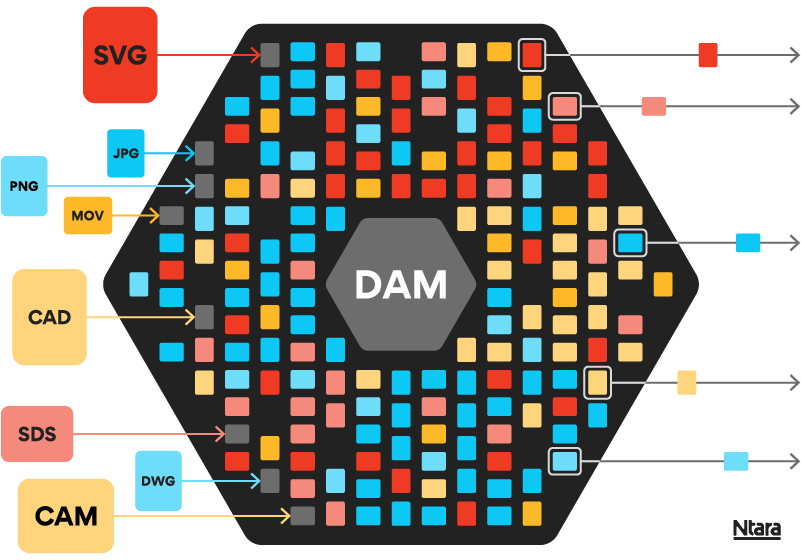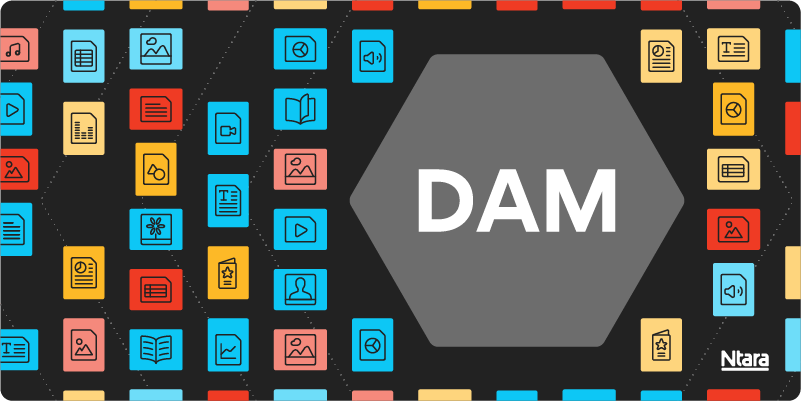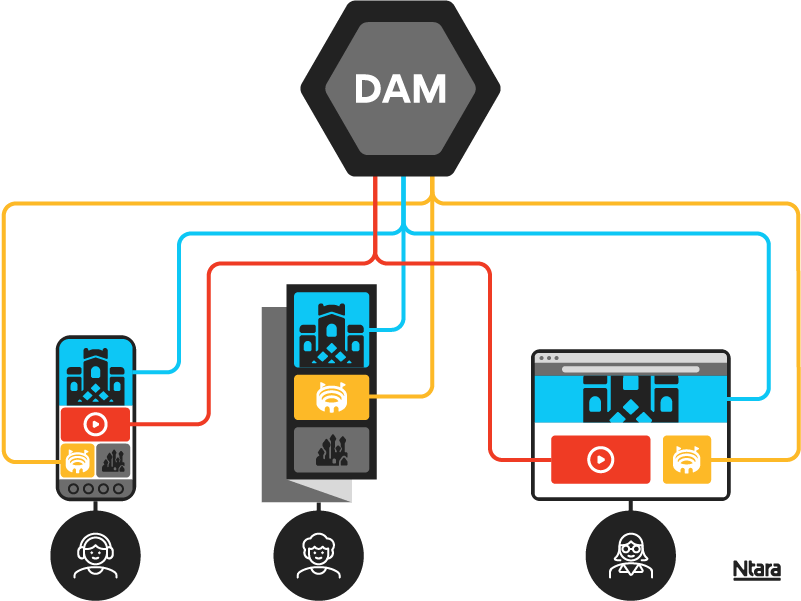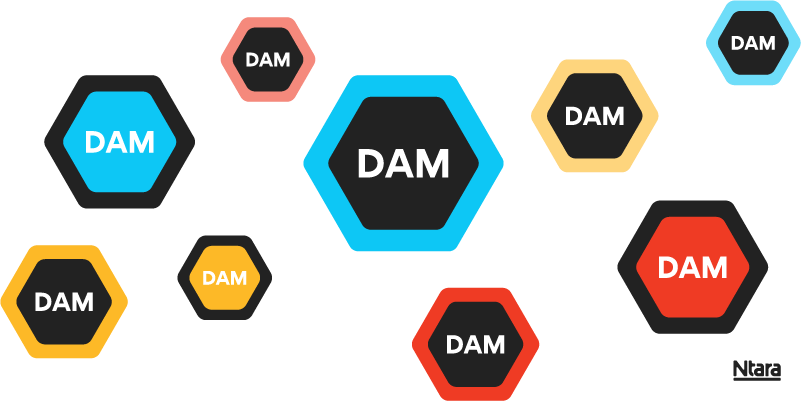Whether you realize it or not, your company uses some form of digital asset management. You create and share countless files, images, videos, and other digital content daily.
Keeping track of and organizing these assets can be a real challenge. Each asset lives somewhere – probably in multiple places across your organization. And when you need a specific asset, it takes time to track down the final version, reformat as necessary, and get the asset wherever it needs to go.
Digital asset management (DAM) software helps companies streamline this process. It provides a central location to store and manage all digital assets.

And DAM goes beyond just storage and organization. It includes tools and workflows to help you find, upload, edit, and distribute digital assets in a controlled and secure environment.
What are digital assets and metadata?
Digital assets include any digital files that hold value to your business. This can include images, videos, audio files, logos, catalogs, print files, user manuals, packaging files, and more. If an asset can be captured or created digitally, it can be stored and managed in DAM software.

There’s another aspect that is important to track: metadata.
In digital asset management, metadata refers to the descriptive information and data associated with a digital asset. Metadata provides context and information about the asset, making it easier to find, retrieve, regulate, and understand.
By attaching metadata to digital assets, organizations can create structured and searchable libraries. DAM systems often provide features for adding, editing, and managing metadata to ensure that digital assets are well-organized and can be efficiently retrieved and utilized.
Given the diversity and complexity of assets and metadata, proper management is critical. With DAM software, you have the tools to ensure the effective use of digital assets in marketing and operational activities.
Why is digital asset management important?
Digital assets are the backbone of most marketing activities. That includes creating different types of materials, including imagery, infographics, catalogs, brochures, ads, email campaigns, presentations, videos, and more. The effectiveness of your marketing depends on the quality and relevance of the digital assets used.

Without effective digital asset management, you risk losing track of your digital content. Your teams will duplicate efforts, wasting money and time on recreating existing assets. Your staff will struggle to distribute, copy, and move assets to the right locations at the right time to get your assets to perform.
Digital assets are often scattered across the organization — stored in SharePoint files or personal computers and passed around via email for input. Without business rules and governance, the quality of your assets can degrade over time.
For example, an image may be cropped in an unauthorized way or lose the appropriate resolution. This can lead to poor brand consistency. That means your customers get an inconsistent experience across channels. And since B2B buyers use a range of sites to transact, that’s a risk you cannot take.
DAM is also important for digital rights management (DRM). Let’s say you hire an agency to create product images. Your rights to use the assets are likely dictated by a contract that includes expiration dates, the allowable number of uses, and certain channel restrictions. How will you notate the guidelines or track compliance? What happens if the contract expires or renews? Digital asset management helps you track the metadata required for DRM. That way, assets with timed rights usage won’t expire without your realization, which could expose you to a lawsuit or fines.
For these reasons, the implementation of digital asset management software is essential. By streamlining asset management, your business can increase efficiency and maintain compliance. You can ensure your content creators can access the right assets, simplifying collaboration and project management. And most importantly, you can create consistent and compelling customer-facing material that drives business growth.
Which is the best digital asset management software?
Our answer here is the same with most software—it depends.

There are many choices for DAM software. First, we recommend establishing your business case for DAM. Gather and prioritize your requirements. Then, evaluate which software meets them.
Factors to consider with DAM software include ease of use, scalability, integration options, security, CDN (Content Delivery Network) capabilities, image transformations, rights management, syndication options, and customizability—to name a few.
Ultimately, the choice of DAM software depends mainly on your organization’s unique needs and budget.
What is the difference between DAM and PIM?
Today’s buyers crave a rich product experience. So, it’s no surprise that product information management (PIM) and digital asset management often go hand in hand. The two technologies bring distinct advantages and, with the right integrations, can intersect to help you take a holistic approach to data management.
With PIM + DAM, you gain the governance and workflow you need for product attributes and digital assets. This powerful software duo helps support an accurate and compelling product experience from end to end.
Learn more about the differences and benefits of PIM + DAM.
DAM made easy: Partner with Ntara
At Ntara, we’re passionate about helping manufacturers in industries like industrial and consumer brands maximize their digital asset potential. Our consultants understand the nuances of designing a unified data practice (i.e., infrastructure + process) aligned to your exact needs.
If you’d like to work with a consulting partner with an established software evaluation process, drop us a line.